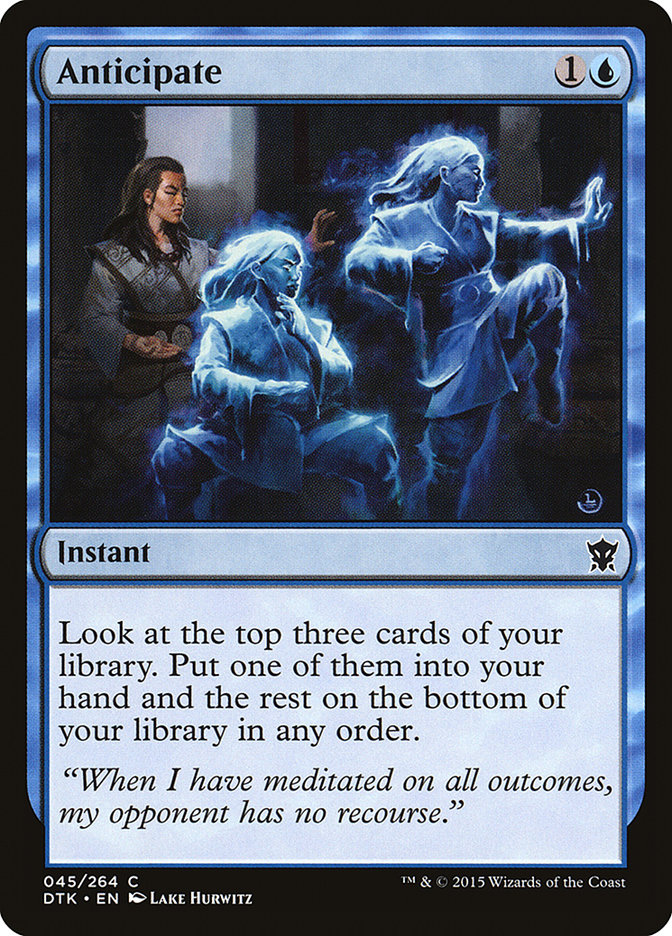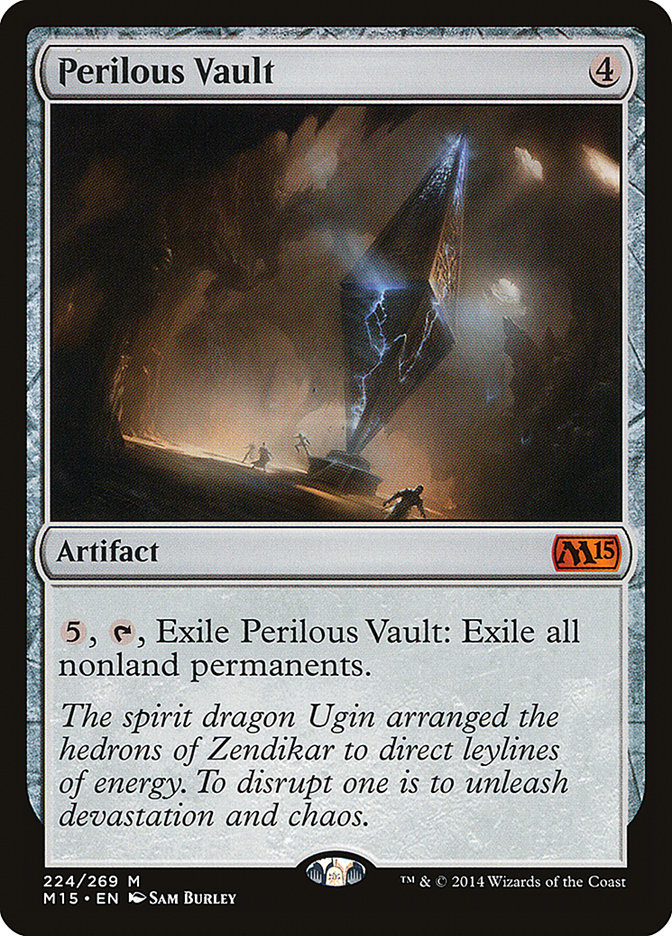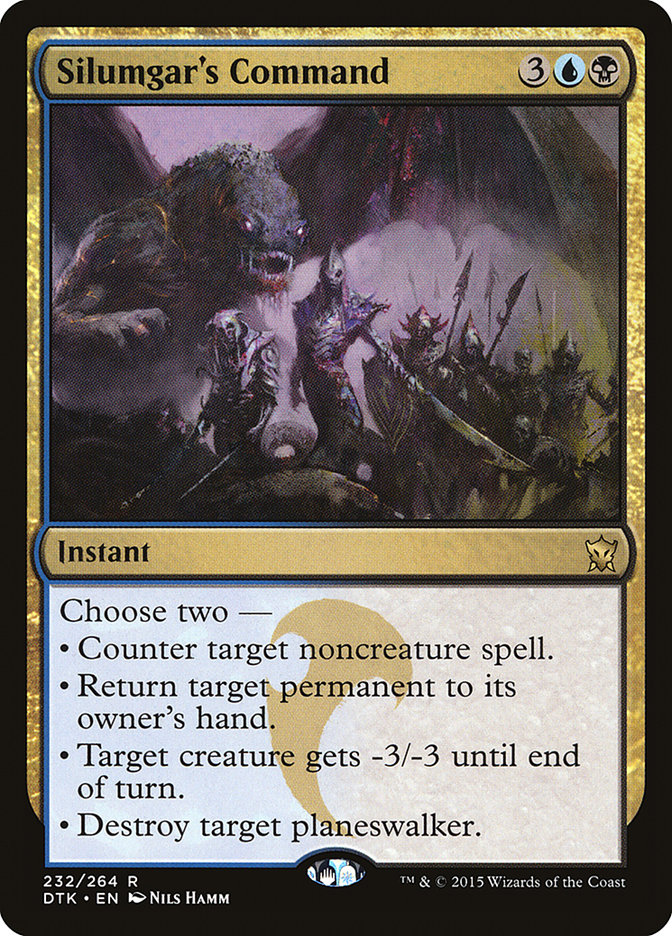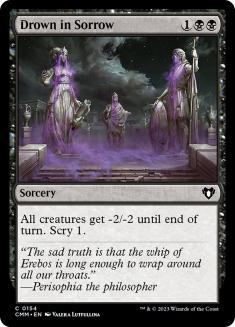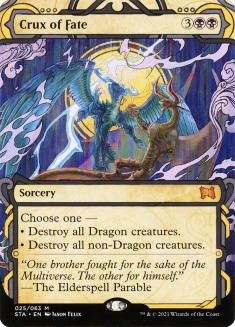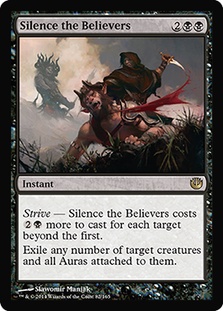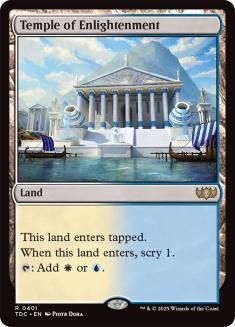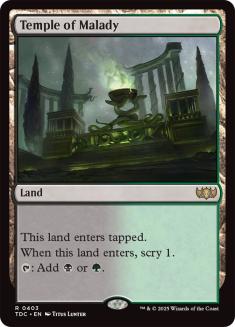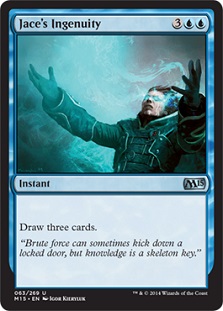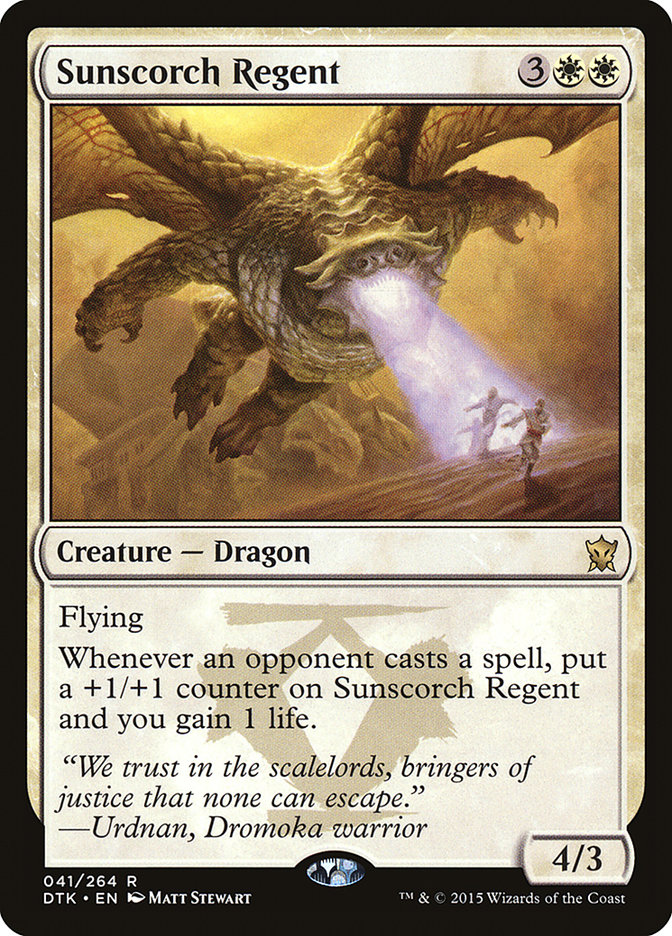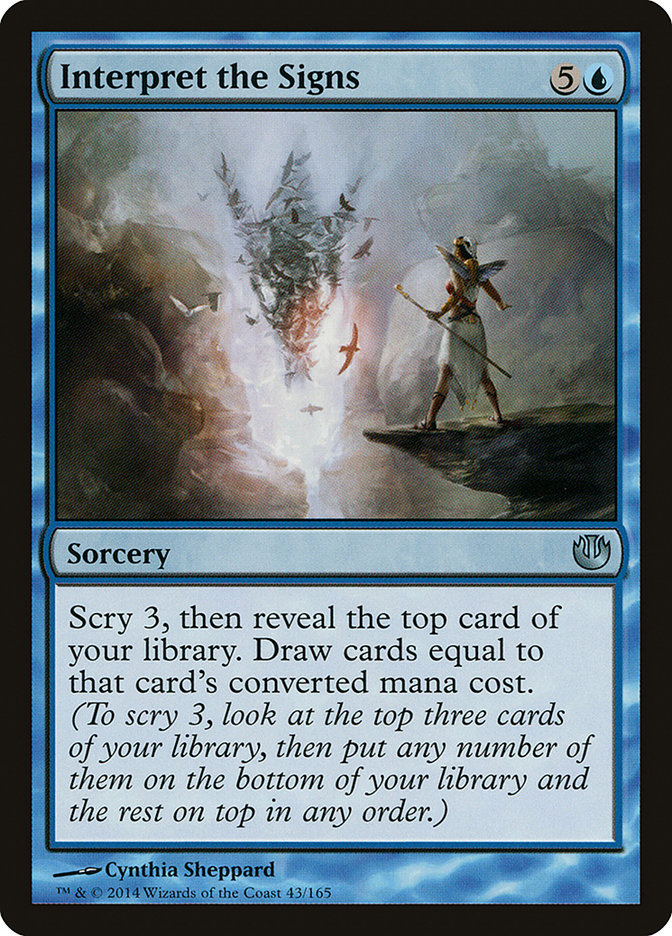In the player profile questionnaire for Top 8, Wizards of the Coast coverage asked, “What would winning the Pro Tour mean to you?” My
answer? “The culmination of 22 years of living Magic.”
Even though I didn’t win, it is very exciting to say this: “I was good enough to win this Pro Tour.”
Being able to say that, to mean it, and to have it be true is an incredible feeling. As the coverage team kept being fond of saying, I’m ‘old-school’, and
Magic has been a huge part of my life for a very long time. I only have two Grand Prix Top 8 finishes, fifteen years apart, and I have a ton of near-miss
finishes. Today, I’m going to call finishing in the Top 8 of a Pro Tour a success. Who knows? Perhaps some day, I’ll view this as a near miss instead. I
know I won’t mind if I get to that point.
For those of us who are old-school, the incredible depth of coverage that we see for events these days is almost bewildering in its scope. Back in the day,
some of the only ways to get a sense of what happened at an event were to go to The Dojo and piece
together the story of an event via the tournament reports of those who went. Combine that with the stories people would share, person-to-person, you could
get a sense of an event, but it was a mythology. Justin Gary’s experience at Pro Tour
Rome was going to be a very different experience than mine or anyone else’s, and the few published photos of the event were indeed rare and treasured by all of
us.
Tournament reports were scoured over by the sharks and the enthusiasts alike, hoping to glean any bit of information they could. My favorite tournament
report of all time is still this inspired work of genius by my friend and fellow Cabal Rogue member John Shuler:
How I won the Mid-Atlantic Regionals with my Song of Blood Deck
John’s report includes a decklist that has the following cards in the maindeck:
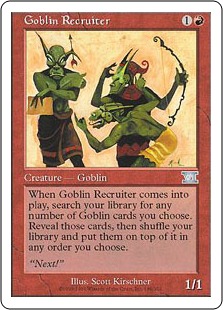
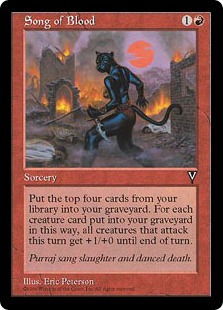
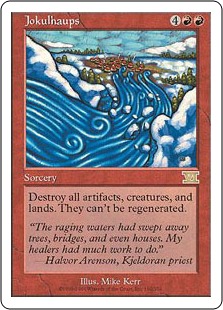
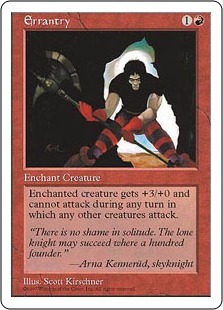

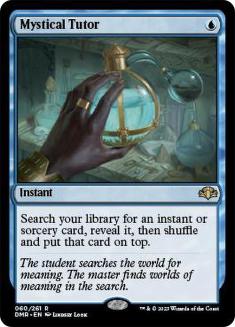
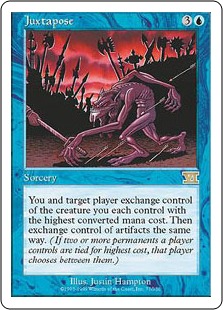
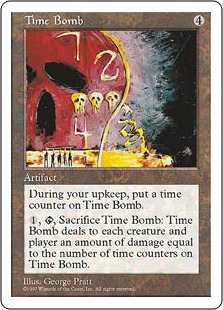

 This report was a thing of genius for so many reasons. Most
This report was a thing of genius for so many reasons. Most
importantly, it wasn’t true. This was a tall-tale, with every round featuring something that couldn’t have happened in the rules of Magic, players who
weren’t at the event, and small jokes about them that any avid tournament report reader of the time would be able to immediately recognize. Reading it now,
not having that context, is probably akin to watching All in the Family
for most people today – sure, you might get some laughs, but maybe you wouldn’t, and a ton of references would probably be lost on you.
But at the time, we definitely howled with laughter.
Now, I can be funny sometimes, but I never really tried to make that a part of my tournament reports. In my classic reports, I tried to paint a picture and inform. There weren’t many
people out there creating regular content, but I was writing as much as I could.
So, perhaps I’m old-school. Well, I’m fine with that.
I hope you enjoy this old-school tournament report.
Before Belgium
After Pro Tour Fate Reforged, our team was feeling fairly good. Depending on how you counted things, we
had two decks in the Top 8 (though only one player), and we were beginning the process of debriefing. I hadn’t been qualified at all, so I was in more of a
support role, but there really wasn’t a huge deck that had drawn us all to it.
I think it is very likely that ultimately we did have the best deck for the event, the Amulet Bloom deck that Justin Cohen took to a finals finish. Whether
that is the case or not could be an argument for another day, but the data does seem to suggest that it might be the
case. Additionally, our team, then called “Team Work” managed to outperform most of the other Pro Tour teams.
It was pretty exciting.
Soon enough, our team had a few minor developments that were awesome. De facto team leader Bob Maher managed to acquire a sponsorship for the team, now
redubbed Team Ultra PRO, and a few new members joined the team, most notably Craig Wescoe. I had already
re-qualified for the Pro Tour, winning one of the last classic PTQs
left to be held, and overall, we were feeling pretty great about what might happen for us in Belgium.
Belgium was going to be Standard with Dragons of Tarkir. In the weeks before the Prerelease, Team Ultra PRO did a lot to affect the metagame. Sam Black’s
G/W Devotion list was a huge force in Miami, and Ben Stark’s R/W Aggro deck did the same for Memphis. Each deck shook up the metgame greatly, and I’m
incredibly proud of our impact on the game in the weeks leading into the release of Dragons of Tarkir.
Of course, throughout all of it, I was fervently of the opinion that U/B Control was simply the best deck in Standard.
I’ve basically felt that way since Hawaii for Pro Tour Khans of Tarkir, and it was gratifying to see that Patrick Chapin’s analysis of that Pro Tour seems
to back me up on that claim.
One of the problems for my particular build of U/B Control, however, was pretty simple: No one else on the team was winning with it.
Now, if you’re being responsible, there are two things you can do when you get this information: put some doubt into your information so you can revisit
your own data, and then test out the matchups again with your teammates directly so you can get a sense of what is happening. After doing this, we could
see that I was, indeed, still winning. And they were, indeed, not.
As Dragons of Tarkir was first partially and then fully spoiled, I started imagining what decks were going to be looking like and if anything was going to
help out U/B Control. There were a few cards of note, but nothing that utterly demanded attention.
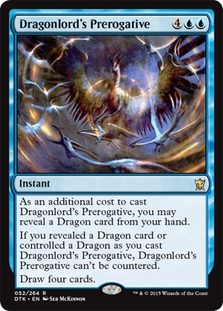
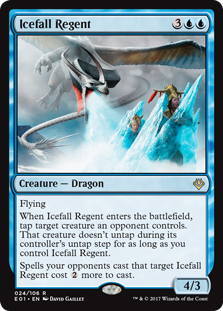
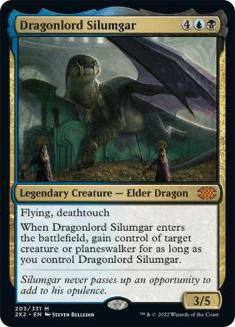
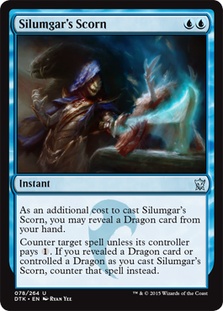
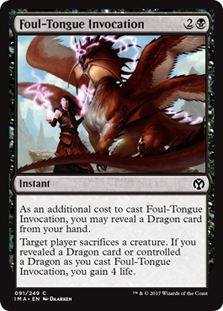

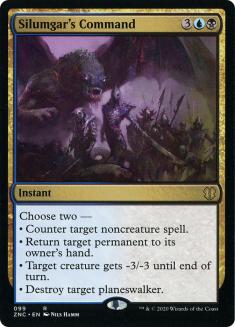

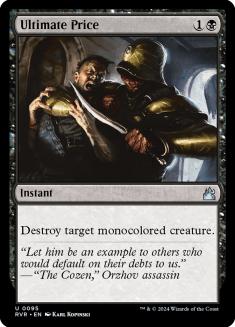

I would try out all of these cards, in different configurations, seeing how well they fit into U/B Control. Some felt pretty clear-cut, and others, not so
much. Of them all, this one was the most promising
It just seemed to fill in the gaps of the deck, and it made things easier for everyone who piloted it. Both reducing the tapped land count and making the
deck easier to pilot seemed like they would be great boons for the deck, but there was still plenty of testing to be done.
I felt like the future looked so very bright for the deck though. This was in large part thanks to the way that metagames work.
There are many ways that you can analyze a Magic metagame. One way to think about it though, is through an ecological lens. Our initial testing was
bringing forth a very particular conclusion: Dromoka’s Command might be the most obviously powerful card in the set.
If you’ve played Dromoka’s Command, you’ll understand why that might be the case. It utterly ripped apart games where it was relevant, and it was relevant
in most matchups that you might play. Dromoka’s Command meant that there was a very strong incentive to be able to fight fairly on the battlefield, and
that other decks, in return, were going to try even harder to do so as well.
This was incredible news for a deck that plays this card:
Meanwhile, the rest of the world was doing this:
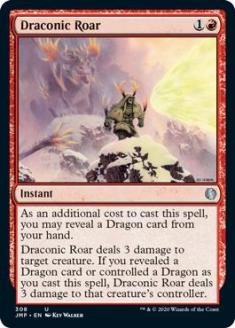
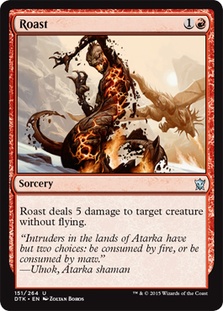
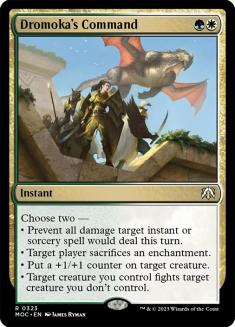
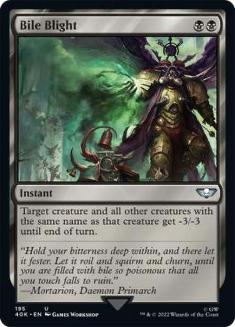
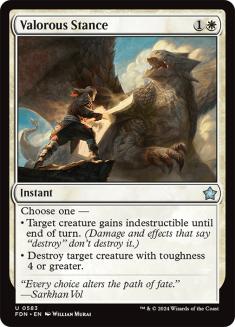
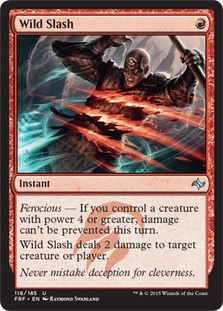

Even Hero’s Downfall played into the plan of this deck. If an opponent had an answer, it was another draw that gave my U/B deck another turn to find more
card draw or answers of its own. As the deck that almost always had the inevitably in any matchup, as the world shifted to fights that involved cards like
the above, it felt like all of the other decks I was looking at were, more and more every day, becoming clearly worse than U/B Control.
Draft Prep
Meanwhile, though, there was Draft prep. The Madison-based portion of the Team Ultra PRO crew had put in an unbelievable amount of work on the format, like
we always had. There have been many times in Magic history that I have fervently believed that Madison was the best place in the world for Limited Magic.
This is one of those times. Well before this Pro Tour, Neil Reeves had told me he envied what Madison had for Limited, and in the lead up to this Pro Tour,
my teammate Ben Stark expressed a similar sentiment.
What it really boils down to is that Madison loves to draft.
There are a ton of drafts happening in Madison in any given week. And importantly, a lot of these drafts have some truly talented players. The
weekend after the Prerelease, there were no less than a dozen qualified players playing in drafts gathered together as a kind of boot camp, with upwards of
thirty players drafting at any given time.
It was awesome.
One of the key moments for me was when I had my face crushed in by this card:
This card is just absurdly good in the format.
Pretty quickly, I had shifted my draft pattern into finding The One True Thing. This is something I do a lot in Draft, where I try to find what I perceive
to be the best archetype in the Draft format and get very good at drafting it, all while having a basic understanding of what the rest of the format looks
like so that I can become one of these ‘lesser’ archetypes if need be.
I’d very quickly gotten into the idea that Sabretooth Outrider was vying with Epic Confrontation for the best common in the set. I understood that U/B was
a very popular archetype in other places, but here in Madison, I was winning with and losing to decks that were designed to push formidable, get it as
quickly as possible, and attack, attack, attack. The tricks in the set were such that being a blocker wasn’t even all that exciting.
While I generally credit all of Madison for the general sense of growth you can get about Limited, I credit Andrew Tenjum for showing me the way on
Outrider. After the umpteenth draft where he crushed me, I adopted his basic strategy and ended up on this deck:
Creatures (14)
- 2 Summit Prowler
- 1 Flamewake Phoenix
- 4 Gore Swine
- 1 Zurgo Bellstriker
- 1 Swift Warkite
- 1 Atarka Efreet
- 1 Vulturous Aven
- 1 Kolaghan Aspirant
- 2 Sabertooth Outrider
Lands (17)
Spells (9)

I didn’t lose a game with this deck.
It struck me as a little surprising, though. This certainly felt like a beatdown deck, but I had basically no two-drops. The big lessons for me
with this deck are what I shared with Team Ultra PRO later that day:
“All the four power creatures made me not feel like I was missing the two-drops, the Spidersilk Net was excellent, and the Outrider was incredible.”
One thing I ended up being an early proponent of, on my team, were the ‘lackluster’ one-drops. Shape the Sands and Kindled Fury were doing great work for
me. But, in the same vein, so was Spidersilk Net. I think that these cards are at their best in an aggressive deck. Bob Maher would say later that he
wasn’t embarrassed to be playing Shape the Sands and that the reach gave enough value for him to think of it as reasonable to play. For me, though, I
almost never cared about the reach, I just wanted to have five extra toughness as a trick. Similarly, Spidersilk Net was the same deal. Much like in
Zendikar, where many of us eventually learned that Spidersilk Net was a secret aggressive card, in this Draft format, being able to move around two
toughness is actually really powerful if you are being aggressive.
I felt so ready for draft. I felt so ready for Constructed. The Pro Tour couldn’t get here any sooner.
Belgium House One
Our first house in Belgium had only a small subset of the team: me, Matt Severa, Andrew Baeckstrom, Sam Black, and Justin Cohen. One of the reasons that
Team Ultra PRO works like it does is that it was designed to be a team where people weren’t expected to engage in week-long boot camps before the event.
Back before we had a sponsor and were called ‘Team Work,’ this was an important factor for many of us. Even before that, for PTM15, Matt Sperling struck
out on his own because he couldn’t make the boot camp, and some of the roots of the team were born there, with me among many of those giving him deck help
work and him eventually settling on the Burn list I gave him.
For the five of us, we struck out early for Belgium for a collection of reasons. I think all of us wanted the opportunity to get over jet lag well ahead of
the event. In addition, though, I really wanted to just grind out the fine details of my deck, and Matt Severa and Andrew Baeckstrom were both trying to
figure out if they could pilot the deck or not.
We got a small, four-story house in Brussels and basically spent Saturday through Wednesday playing Magic, cooking, playing Magic, sleeping, and playing
Magic. On the final day, Craig Wescoe briefly joined us as well, but up until that point, it was basically a rotation of the five of us playing whatever
test decks were on hand. It was basically great, other than the internet being utterly horrible.
At one point, it became clear that my U/B Control deck was literally beating everything that wasn’t either Temur or specifically designed to beat the deck.
Justin was certainly getting a little frustrated because he felt like I wasn’t taking seriously enough the various brews that were beating my deck, but it
didn’t concern me at all. As I told him, in my experience, very, very few people actually manage to create something new that is good. First of all, even
making something new at all is difficult. Secondly, in a format this well-developed, having it be good enough to hang with the pre-existing decks is
incredibly difficult.
I walked into the testing house with this list:
Black/Blue Control v.5.13
4 Dissolve
1 Negate
4 Island
4 Swamp
The first thing to note about this deck was that it was playing much, much more easily for everyone else. Anticipate was certainly a part of that.
The second thing to note, though, was that it wasn’t doing nearly as great against the most aggressive decks as I would like. Notably, a testing session
against Paul Rietzl’s Red Aggro deck splashing for Atarka’s Command and another session against the Braverman Mono-Red lists from the Season One
Invitational was making it clear that the deck had given up game against red.
Going into this format, I knew that the deck did decently well against Red. Neil Reeves had been shocked to discover that game 1 the deck did about 40%
against red, and game two and three, it jumped up incredibly. In part, this was because I respected the deck with cards that mattered in the matchup.
However, I was finding that the Anticipates in the deck were really bogging me down.
They were just too slow. After relooking at Shaheen Soorani’s Esper list, I dropped to three Anticipate, making room for more action. Soon I was down to
one.
It was during this era that we started testing a card I would come to call “The U/B Azorius Charm.”
This card did a bunch of things, none of which was particularly impressive, but all of which would help the deck get further into the game. It could clean
up Planeswalkers, bounce your own Radiant Fountain for a quick two life, and just had some general utility.
But it was hella slow.
To make up for it, other removal was introduced. We’d gotten to this place:
Black/Blue v.5.14
Out:
In:
In essence, it had just started looking like the deck wanted to speed up ever so slightly and have more general action. In addition, I’d found myself
wanting another counter of sorts, and Silumgar’s Command could provide that. Crux of Fate was more than a little bit underwhelming, though still solid, and
I was trying to experiment to see if I missed it at all.
At a certain point, though, the truth just seemed obvious. There was a big trap in the deck:




Aside from the fact that every time that I cast the card, it felt anemic, I finished up a testing session against Abzan Control, and I hadn’t utterly
decimated the deck like I had in previous versions of the list.
I wasn’t liking Anticipate against the fastest decks because I wanted to be actively doing other things. I’d gone down to three, then one, then none.
Against the slower opponents, though, I hadn’t liked Anticipate because I actually had time to cast true card draw in those matchups, and it was just
better to slam down a Jace’s Ingenuity or something more impressive in those matchups.
I ended up here:
Out:
In:
Of the changes here, adding in more land was a necessity to maintain a degree of stability to the deck if you were going to remove Anticipate. In addition,
adding more Temples was important, so long as you could continue to hold the fort against aggressive decks.
The most controversial of the changes is probably cutting Dig Through Time. I know from a great deal of experience that delve simply isn’t free. Without
all of the early drops, Dig Through Time costs a great deal more often than you’d like. Simply having extra Jace’s Ingenuity was better. We’d slowly tested
into more and more, and an attempt at Interpret the Signs main had simply become Dragonlord’s Prerogative, with the Interpret being cast back to the
sideboard.
The Constructed was humming along for me. On the other hand, the rest of the team was largely unresolved as to what to play. It was around this time that
Maher, stateside, basically decided he was going to go with Caleb Durward’s Bees list. Most of the rest of the team followed suit.
Belgium House Two
On Wednesday before the Pro Tour, Sam Black and Justin Cohen were going to head to their hotel, and Andrew and Matt and I moved on to our next apartment,
this time a flat about a twenty-minute walk to the venue.
Matt and I were both on U/B Control, and it looked likely that Andrew was going to be a Bee with most of the rest of the team. In our new apartment, we
finally had great internet, so we caught up on team emails and finalized our respective lists.
By this point, Matt had pretty well convinced me that Dragon-style decks were going to be the biggest part of the metagame. There were still a few card
slots that I was tinkering with, but ultimately, I ended up making a metagame chart of all of the decks that I expected to be most represented and which
cards would be best for those situations.
It actually looked pretty clear.
In the end, this is what I registered:
Planeswalkers (5)
Lands (27)
Spells (28)

Matt Severa would register an only slightly different list, with Dissipate being a second Ultimate Price and the sideboard Interpret the Signs being
Dissipate.
I felt good and ready. That Thursday night, we headed to Maher’s hotel room to discuss the draft.
It was a great discussion. Everyone had arrived at the hotel, and we had a several hour long spirited discussion of the format. There were some minor
disagreements, but overall the team agreed about the format a great deal. One of the things we basically all agreed was that, yes, there was a U/B deck to
be drafted, but that it was just generally not as powerful as the strongest attacking decks.
We’d had draft discussions online already, but this was the first time that we had had one in person. It was a very interesting dynamic, with a lot of
chaos in the room, but it felt like it was just a very positive experience, and a lot of people were bringing their experiences to the table. At one point,
Craig Wescoe was defending a particular draft choice (with very little support), and at another, a spirited discussion of the quality of certain green
commons had gotten going with no agreement found at the end of it between Ben Stark and most of the Madison guys.
The great thing about this discussion, though, was that we were arguing nuance not substance.
When it was all through, Maher passed out to us all of Team Ultra PRO gear, and we headed to the site to get registered and get ready.
Day Zero
The site, Tours and Taxis, was in a strange part of the city near a waterway, but it wasn’t really near the abundant food and bustling parts of the city
I’d grown accustomed to. The inside of the hall, as has become seemingly usual at these events, was pretty striking.
One of the awesome things about being at these events for so many years is just seeing people you’ve known for such an incredibly long time. One of the
first people I saw was Pro Tour photographer Craig Gibson, an awesome guy who is as kind as he is fun and funny. He was the first of many to have a nice
quip and to give me a hello.
I’ve spent a lot of the last many years off of the Pro Tour. There are a lot of factors to that. I had a good five years where I was a Pro Tour regular
from the mid- to late ’90s into 2001, but after that, it has been few and far between. The most recent gaps started around the time that I hit graduate
school, and before Pro Tour Hawaii, my last Pro Tour had been Pro Tour Hollywood, where I finished well (10-6, single format), but not well enough to
continue.
When you’ve been gone so long, and yet people know you, there is a way in which people are yet more excited to see you when you return. Because of the Open
Series circuit and my other Magic work over the years, I’ve grown to know a lot of people. I’ve done coverage of Magic for Wizards of the Coast. I’ve been
behind the curtain, and I’ve been on the big stage before.
It just felt like, walking in, I was at a reunion of sorts, where people were excited to see me because it had been a while. In the case of a few of the
coverage guys, like the inimitable Josh Bennett, it really had been years. In a few cases, I helped make fun introductions, like introducing Rich
Hagon to Bruce Swiney, a player who had played at the first five Pro Tours and then had a gap – a nineteen year gap – between then and now on the
Pro Tour.
Some old-school Magic players like Nicolai Herzog gave me a big hug. A few people I’d met at the Super Sunday Series gave me a spirited hello, excited to
reunite after such a cool weekend in Seattle. Seeing old friends like Scott Larabee was a special treat, though; he was one of many people that really made
my presence feel appreciated.
Of course, there were a ton of Midwesterners there as well. Adam Jansen, Andrew Tenjum, Lucas Duchow, Stephen Berrios, and many more were giving each other
well-wishes for the weekend.
I think my most memorable interaction, though, had to be with my old teammate Zvi Mowshowitz.
Seeing him, I approached and asked him how he was doing. I knew he was a new father, so I asked him what that was like, and he told me a few brief
anecdotes.
“So,” he said, “Here to do coverage?”
“No, I’m playing,” I replied.
“Oh.” He paused. “Well, good luck then!”
It was just a funny interaction. He’d been so used to seeing me for several years with the one hat on, he’d forgotten that it might be possible for me to
wear the other. So it is.
I was feeling pretty good. My deck was good. My draft skills were polished. I just felt ready.
Day One
My first few moments waking up in the apartment, I felt pretty good. We all gathered together, making omelets and coffee in the kitchen, and we waited for
the cab to take us to the venue. It really wasn’t that far, but I think there was just a general sense of urgency that made us want to be there as soon as
we could.
After all of the draft tables were seated, something really touching happened. All of the people at their first Pro Tour were asked to stand and have their
accomplishment acknowledged by the room. They received a thunderous applause, and it felt really heartwarming to be a part of. I think this might have been
the idea of either Helene Bergeot or Matthieu Pojade, both fabulous Wizards bigwigs, but whomever came up with the idea, I know I wish it had been
something that had happened at my first Pro Tour, way back in 1997 (aka Buehler Chicago).
My first draft table was pretty strong, I felt, but not overwhelmingly so. I was at the third seat, which I took to be a good omen.
1. Joseph Sclauzero – Austria
2. Zach Stern – USA
3. Adrian Sullivan – USA
4. Ari Lax – USA
5. Brad Nelson – USA
6. Kamiel Cornelissen – Netherlands
7. Case Johnson – USA
8. Michael Ingram – Canada
With Ari and Brad, teammates, directly to my left, and a strong Midwestern player, Zach Stern, to my right, I knew that I was in a potentially rough spot.
I didn’t feel nervous at all, though. My plan was to force red, but go with whatever came. Most of my experience up to this point with the draft was that
you could change colors a lot, so long as you finally nailed it down in time to find a deck.
My first pick was this:
I tried to settle into first a W/R list and then a W/G list, but in both cases, things got cut. I eventually ended up on W/B, with the tiniest touch of
blue.
Creatures (14)
- 1 Hooded Assassin
- 1 Soulflayer
- 1 Sultai Emissary
- 1 Sandsteppe Outcast
- 1 Sandcrafter Mage
- 1 Sidisi, Undead Vizier
- 1 Sunscorch Regent
- 1 Aven Sunstriker
- 1 Dragon Hunter
- 1 Dromoka Captain
- 2 Hand of Silumgar
- 1 Ukud Cobra
- 1 Misthoof Kirin
Lands (17)
- 7 Plains
- 8 Swamp
- 2 Tranquil Cove
Spells (9)

This was a great deck to me. I barely splashed into the blue because I felt like I didn’t have much in the way of pure removal, and between the three blue
sources and the Sidisi, it felt practically free.
Round 1 – Michael Ingram – R/G Aggro (With Whisperwood)
Michael wins the coin flip, and things get to a bad start pretty quickly. We trade a bear for his Smoldering Efreet, but an Atarka Monument leads him into
a turn 4 Whisperwood Elemental. Ouch.
I don’t really last all that long despite really trying to do my best.
Game 2 flips the ‘overwhelming advantage’ script: I set up a three power Aven Sunstriker fairly early, and it begins to eat Michael’s face. He isn’t long
for this world. Game 3 is actually fairly similar to game 2, but Michael also gets out a Whisperwood Elemental and manages to kill my Aven Sunstriker while
at a very low life, one. I’m holding the fort with a billion-billion Myth Realized, but he has started to overwhelm me. Using his Atarka Monument, he comes
on in to try to close out the game, but my solitary morph is a heretofore unseen Misthoof Kirin, and I finish the game.
1-0
Round 2 – Zach Strern – W/B splash Red Aggro
He initially comes at me with a Reckless Imp and then Kolaghan Forerunners. I try to stabilize, but he keeps laying decent creatures before Ojutai
Exemplars drops down and really finishes me off.
In the next game, we sit looking at each other for a bit, trading creatures in combat, when I drop the Aven Skirmisher and turn it into a three-power
critter with Glaring Aegis. Then I do it again in game 3.
It’s starting to feel like I have twelve of these Skirmishers, instead of just one.
2-0
Round 3 – Ari Lax – U/G Tempo
Ari and I were teammate for Pro Tour Dragons of Tarkir, and I’ve long respected and liked him.
This was a crazy match. I don’t think I can beat the description put together by Josh Bennett.
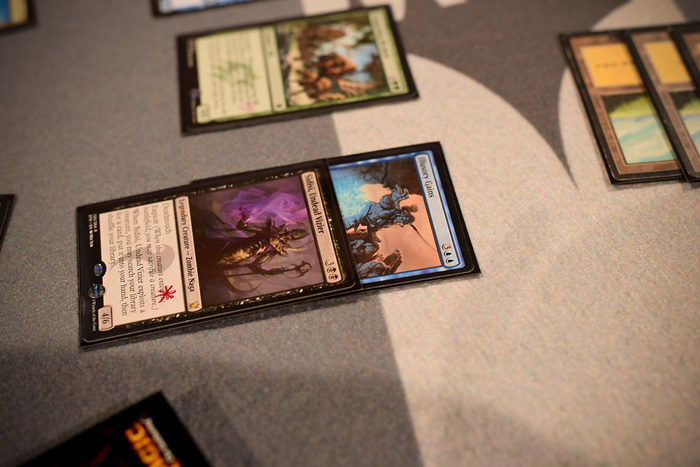
Here is Josh’s coverage of
the match.
3-0
Undefeated in the draft. It felt really good to start out the Pro Tour so strongly, especially because I felt so great about my Constructed deck. Overall,
I think my Draft deck was going to go somewhere between 2-1 and 3-0, but I’d felt that way before. In Khans of Tarkir, I felt like one of my decks was a
clear 3-0 deck (I went 2-1) and another a 2-1 to 3-0 (I went 1-2). I don’t think there was anything wrong with my analysis that first time. Sometimes luck
just shifts the other way.
Onto Constructed!
Round 4 – David Navajas – G/R Dragons
This is exactly the kind of deck that I want to be playing against. He had Draconic Roar main and was running Sylvan Caryatid and Courser of Kruphix. In
our testing, this matchup was the biggest of cakewalks, basically nearly impossible to lose unless you messed up or got unlucky.
That’s pretty much how game 1 played out. He never got me below sixteen, and eventually, he conceded to Ugin about to go ultimate. After sideboarding, he
was able to get me down fairly low (three at the lowest point), in part thanks to Xenagos and Nissa, but a combination of Perilous Vault, Aetherspouts, and
never having to fear an instant play from David made this an easy win.
4-0
Round 5 – Thomas Ellis – Abzan Aggro
This is another matchup that I generally view as extremely easy. During early playtesting, Craig Wescoe asked how I could say that when William Jensen had
made it so clear that it was a bad matchup for his version of the deck. One of the big reasons was that the other versions of U/B Control didn’t respect
attackers enough, and they thought that Crux of Fate was actually a good card rather than viewing it as a very mediocre role-player. It had become clear
that unless the deck was deeply antagonistic, running heavy on Thoughtseize and running four copies of Warden of the First Tree, that they didn’t
have much of a chance game 1.
Thomas’s deck went part of the way there, but not all the way. Game 1 was a cakewalk, where I dropped to eighteen at the lowest and just kept cleaning up
the world with removal. Game 2, a stumble allows a Wingmate Roc to get out with friends, and I crumble pretty quickly.
Game 3, Mastery of the Unseen comes down, but this is a very slow card, and between Perilous Vault and the rest of my deck, I allow myself to get to a very
low life total to reset the board and take over.
5-0
Round 6 – Piotr Gologowski – Jeskai Ascendancy
Piotr is running a true Jeskai combo deck, with mana creatures, Taigam’s Scheming, and a hefty amount of card draw. For how my deck is built, if you play
the game very conservatively, it is actually very hard for him to win.
The game repeats itself numerous times. I actively keep my mana open as often as possible, I use Perilous Vault as late as I can, and I tear him up with
relevant spells. Played properly, this is an utter nightmare for him, and it doesn’t take very long for him to concede in both games after I have things
sewn up and an Ashiok is about to go ultimate with me having a full hand.
6-0
Round 7 – Shouta Yasooka – U/B Control
I knew that Shouta was playing U/B Control, but I didn’t know the exact makeup of the list until much later.
This is a very grindy matchup, and it can go an incredible number of ways if both players are patient and smart. He played the match very tightly, and game
1 I make a pair of mistakes so minor that Bob Maher says I’m being too hard on myself. I fetched a land in order to make a pair of upcoming scrys better,
and I cast a middle game Dig Through Time when I was pretty sure the game was solidly looking to be a decking situation.
I ended up being exactly one card short of decking him via us both running out of cards.
I still think I messed this up.
In game 2, a Stratus Dancer does fifteen damage to me before I answer it, and then we have a game-ending fight over his Ugin that he wins. I actually think
I was two life shy of taking this one down.
One of the things I came out of the match thinking, though, was this: I can take him.
6-1
Round 8 – Jelger Wiegersma – Atarka Red
I knew exactly how this played out: game 1 he would have a distinct, almost two-to-one edge. Game two and three would flip it to be wildly in my favor.
He crushes me game 1. This isn’t unexpected. Game 2 to 3, though, I completely decimate him, and he is barely in game 3 at all despite having a stellar
draw.
7-1
I’ve finished the day in seventh place. Brian David-Marshall wants to interview me, but the time is growing short so the interview gets cut. Meanwhile,
Matt Severa wants me to go to dinner with him, Gaudenis Vidugiris, Zvi Mowshowitz, and Sam Black, but Bob Maher’s wife, Courtney, has waved me over.
A more relaxing dinner with two non-Magic players, Courtney Maher and Lindsey Port
sounds great.Joining us are Bob Maher and Steve Port.
We eat dinner on the Grand Place, and after, Matt Severa joins us for a scotch before Matt and I head back to the apartment, past Manneken Pis, and
beautiful slumber.
Day Two
This morning, Matt and Andrew and I decide to walk to the venue. I actually end up regretting this, as it’s farther than I realized, and I really wanted
the opportunity to relax.
The next draft pod is pretty strong, Pod 1.
1. Minh Nguyen – USA
2. Stephen Madden – Ireland
3. Shouta Yasooka – Japan
4. Adrian Sullivan – USA
5. Rick Lee – Malaysia
6. Ivan Floch – Slovakia
7. Felipe Valdivia – Chile
8. Martin Dang – Denmark
The draft goes pretty incredibly. I open a Secure the Wastes (“Secret W”, in our testing house parlance), and I push into red. I generally prefer a more
power-heavy red deck than white can provide, but the deck just felt great.
Creatures (13)
- 1 Wandering Champion
- 1 Wardscale Dragon
- 2 Lightning Shrieker
- 1 Mardu Woe-Reaper
- 2 Mardu Scout
- 1 Sprinting Warbrute
- 1 Atarka Efreet
- 2 Herald of Dromoka
- 2 Sabertooth Outrider
Lands (17)
Spells (10)

There are several cards that some people weren’t excited about in my deck:
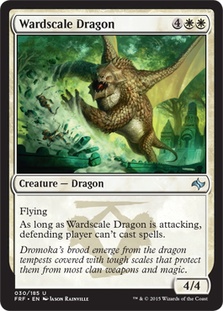
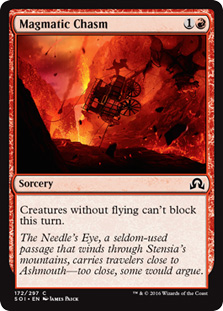
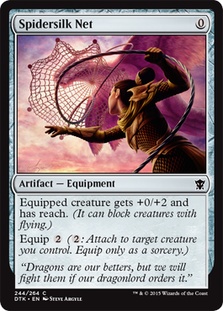

I actually loved these cards in the deck. At the top of my curve, I loved that the Wardscale Dragon, a) was a Dragon, and b) could set up situations where
my opponent couldn’t interact with me during a key trick. Spidersilk Net continues to impress me in aggressive decks, and I truly love it in decks with
creatures with one toughness. Magmatic Chasm actually fought against several other decent cards, but I ran several dozen test draws of the deck, and with
all of the power I had in the deck, I just felt like I wanted this more swingy card.
I would call this deck “nearly the Platonic ideal of R/W decks” to coverage reporter Craig Jones. I was only barely over-exaggerating.
Round 9 – Minh Nguyen – W/G splash Red Midrange
In the two games that we played, Minh never dealt a point of damage to me. I had him on the backfoot immediately, with Spidersilk Net making all of his
blocks bad, and the only trades that were happening were ones I felt like I pre-approved of. He had his own Secure the Wastes and a Soulfire Grand Master,
but he never really felt like he was in this one starting on turn 3 of both games.
8-1
Round 10 – Shouta Yasooka – G/R Midrange
Shouta’s deck is excellent, with Epic Struggle, a great curve, high power-to-casting cost creatures, and a great combination of removal and creatures.
He gets me to low life (six) in both game 1 and game 2, but in both games, I was playing for a short game, and a surprise Secure the Wastes for one and an
Atarka Efreet finishing the final point of damage in the two games we played.
9-1
Round 11 – Ivan Floch – U/G Tempo
The first game is over quickly, and despite getting a Surrak down, the massive aggression I have on the board, combined with Spidersilk Net, make it
impossible for him to get a decent block in, and he falls quickly. In the second game, I nearly lose to excellent use of tempo cards (Void Squall, Whisk
Away) and fliers, all because I make the mistake of forgetting that Spidersilk Net also says “reach.” Yikes! I don’t make the mistake twice, and I finish
him off at exactly one life.
10-1
I end up being one of three drafters in the event who would go 6-0, along with my friends Kyle Boggemes and former teammate Steve Rubin. I really loved the write-up from Craig Jones, and I imagine you will as
well.
Now we were back to Constructed, and I was feeling very good about my chances. Going into the round, I’m the number one seed in the
Swiss – a first for me this deep into a Pro Tour. Scott Larabee kindly prints out the standings for me so I can bask in it.
Round 12 – Andrew Ohlschwager – U/B Control
This ends up being a long, long match that goes to three games. I take over the first game simply from more control elements. On the other hand, he manages
to get an Ugin into play in game 2.
There is actually a lot of time left in the match when I drop a Pearl Lake Ancient into play. At a certain point, when it is clear he doesn’t have any
Hero’s Downfall or other removal, I end of turn return Pearl Lake Ancient to bring back some Temples to my hand, and recast it, just to get something
going. My hand was basically empty, and I had little in the way of mana in play (only eight). I draw a ton of land after that, and a little while later
make a pretty huge mistake of not cleansing the world with a Perilous Vault and recasting a fresh Pearl Lake Ancient in order to get rid of a problematic
Dragon. As it ends up, this choice results in a draw several turns later when he traps Pearl Lake between a Thoughtseize and a Hero’s Downfall, and I’m too
tapped down to save my Pearl Lake. Many, many turns later, him at two, me with an Ugin in play, I cannot finish him on Turn 5.
10-1-1
Round 13 – Martin Dang – Atarka Red
This game goes basically on script for all three games.
He beats me pretty badly game 1. This was helped out by some bad intelligence from a friend who told me Martin was on Sultai Control, causing me to
mulligan an incredibly good anti-red hand.
Game 2, I hold the fort until Ugin ultimates, and he concedes.
Game 3, unfortunately, I triple mulligan and fall to a quick Rabblemaster. I actually think I was very close to winning it though, as on turn 4, my hand
was two copies of Drown in Sorrow, Pharika’s Cure, Hero’s Downfall, and Negate. I just didn’t have two black. In testing, this matchup is so overwhelmingly
in favor of U/B after sideboard, I didn’t feel utterly hopeless even after the mulligan, but getting the right mana still matters a lot.
10-2-1
Round 14 – Jason Chung – G/R Dragons
Playing Jason was a nice relief, because this was exactly the kind of deck I was designed to prey upon. His is a bit better against me because he has
Rabblemaster and Boon Satyr, but he never gets me below twelve in game 1, or sixteen in game 2.
11-2-1
Round 15 – Eric Froehlich – Jeskai Tokens
This was another matchup I love. I’m never in anywhere close to danger in game 1 or 3. Game 2, I lose pretty horribly, failing to draw a third land on the
draw, with help from a Temple. I still feel pretty decent about the keep, but Rabblemaster doesn’t really mind much if you stumble. The other two games I’m
solidly in control the whole time, barely a scratch on me.
12-2-1
And now, I’m locked for Top 8.
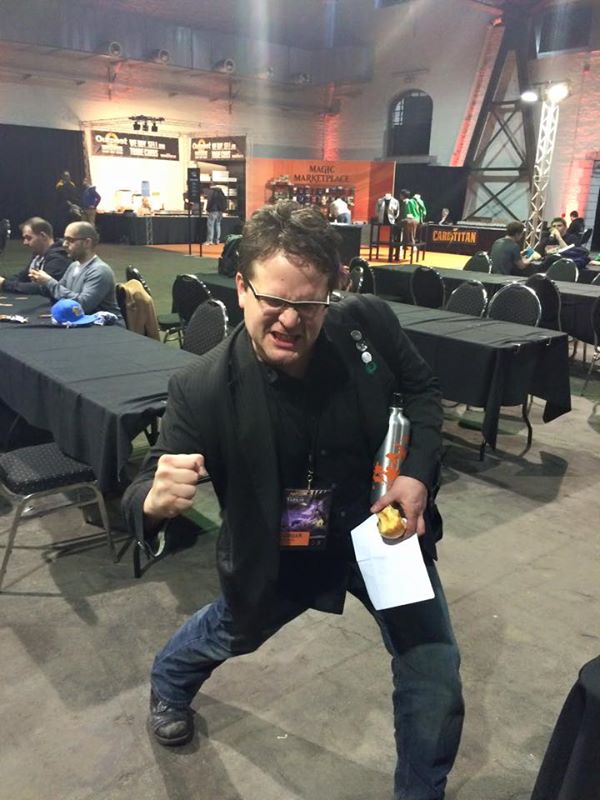
I think about playing versus Ondrej Strasky, who I know is on G/R Devotion, in order to lock up the number one slot; Ondrej will still be in the Top 8 if I
win, but there is a good chance he’ll be playing against someone else in the first round, and I wouldn’t mind him potentially advancing to the finals. I
draw, and go to relax.
Pre Prep
Things are a flurry that night.
Basically, Team Ultra PRO gets into proper form, with my opponents’ decks being built and preparations being made for the next day. My role is to just
watch, and not play, so as to rest up.
At one point, it is clear we don’t need to test game 1s versus my first round opponent, Thomas Hendricks, who is on G/R Devotion. Basically, these games
require a lot to go Thomas’s way for him to win.
I set down some potential sideboard guidelines, and then set up the potential sideboarding plans for Martin Dang, who I believe will be my opponent in the
semis. Several setups of the quarterfinals are played out while I go to sleep, but it takes me a long time to actually manage to start snoring; around 3
am, I’m told.
Day Three
Lights, camera, action.
Things behind the curtain are a lot different than they were when I was a coverage reporter for Wizards of the Coast.
I’d already decided I wanted to dress up, so I had a suit and tie. Wizards, though, was ready with a makeup and hair artist who did me up a little. I can’t
remember if it was Cedric Phillips or someone else I first saw sporting the classy look for Pro Tour Top 8, but whomever it was, I remember thinking that’s
how I wanted to do it when I made my first Top 8.
We were the first match up.
“Are you nervous?” Thomas asked.
I wasn’t.
Sperling put it to me very well. The feeling I was feeling was relief. I’d finally accomplished this one, huge goal. I was ready for this match. I was
ready for this tournament.
Winning was a real possibility. But first, it was one match at a time.
“No,” I replied.
You can read the writeup of the match here,
but I have a few things to add.
In one point in game 1, I have my deck’s only Crux of Fate in hand. I’ve finally drawn a fifth land, and it is a Temple. I want to bait Thomas into coming
in even harder than he already has. “How much does Dragonlord Atarka cost? Is it seven or eight?” I ask. Later in that turn, during combat, I use up a Bile
Blight to shrink a Hydra, dropping to eleven instead of eight. This would both keep me alive from a potential Dragonlord swing, but also, it would look
like a sign of weakness.
Thomas went all in on his hand, going for the kill in the subsequent turn, and Crux locked him out of it.
In game 2, this game swung entirely on the respect Thomas quite rightly put on an Aetherspouts that I never drew. This happened earlier in the tournament,
as well, and in both cases, I never drew the Aetherspouts, but the fear of it ended up making the combination of Aetherspouts, Hero’s Downfall, and Silence
the Believers buy me quite a few more turns. Aetherspouts is just incredible.
In the final game, Aetherspouts was there to clean up after a dead Nissa, Worldwaker, and I won that game at a healthy eleven life.
Then, of course, came the quick defeat at the hands of eventual champion Martin Dang.
He defeated me 2-0, but it was actually quite close. On a critical turn, I tapped six of my eight mana, leaving Negate open, and resolving this:
It revealed this:


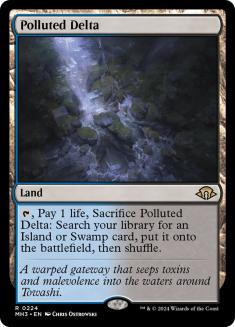

In the industry, we refer to this as a “whiff” or a “miss.”
Now a lot of people have claimed that this is a great example of why Interpret the Signs is bad. But, I sideboard it in in this matchup for a reason. The
game scripts much like this: I kill all the things, and then I need a very powerful card draw spell. What I’m looking for here isn’t card selection, but
raw cards, as all of my cards are good now, and this matchup is such that it is very possible I could be at a low life total, so I really need to just put
it away completely.
Unfortunately for me, the top of my library was horrid, with only three spells in the top twelve cards of my library.
So, what were the odds of that whiff?
After the tournament, me being both the self-torturer and scholar that I am, brute forced the situation, setting aside the exact set of cards that were
left in my library when I cast Interpret the Signs. I did 333 iterations of the scenario, and here were the results of cards seen versus how many times
this occurred:

For the mathematically inclined, here are my average number of cards seen by Interpret the Signs:
Mode: 5
Median: 6
Mean: 6.38
Chance of a whiff? 3%
Well, sometimes you win, sometimes you lose.
Aftermath
There was an incredible outpouring of love and support after my finish. This is my highest finish in a Pro Tour ever. It means a lot to me, and there were
so many things to take in on Facebook and Twitter, I just got overwhelmed with it all. If I missed saying “thank you” to your online support, I’ll say it
now. Thank you.
It didn’t feel bad to have lost to Martin Dang despite my feelings that it was unlikely. He played the matchup basically perfectly, and he was one of the
finest Red Aggro players I’ve seen in a very long time. If you know how critical I am of other red players, you’ll know what high praise this is.
Before the night ended and I went back to the apartment, I found myself in a bar with Patrick Chapin, and we were laughing and chatting and debating. It
was like old times, only with us both a few years older. I still remember us being gangly twenty-somethings on a road trip back from Pro Tour New York,
where we’d both tied for Top 8, not making it, singing songs with Nate Heiss while we celebrated just living this Magical life.
On my player profile online, I called this finish “the culmination of 22 years of living Magic,” and that’s exactly what it is. I feel like I’m in
for a new chapter in the game, and I’m excited to see where things will go next.
I’m locked for Gold by next Pro Tour. And the sky is the limit.

